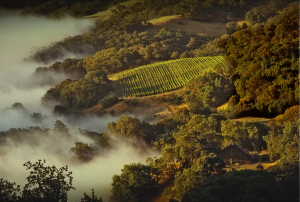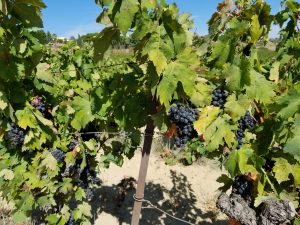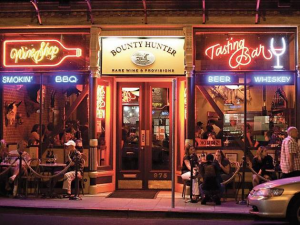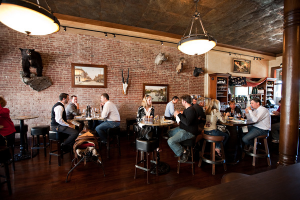If you look on a map at the winemaking area of Napa Valley, it’s shaped like a ladder. The uprights are Route 29 and the Silverado Trail. The rungs are the Oakville Cross, the Rutherford Cross and so on (with a few others with names like Zinfandel Lane thrown in). When you drive along these roads, you have the opportunity to see many of the most famous wineries in the region and, in fact, of the world. We’ve traveled that way many times and have tasted some spectacular wines.
On occasion, though, it’s a good idea to take some of the side roads. Because they are off the main drag, some of them are less visited, meaning smaller crowds and easier traffic. On the other hand, some of Napa Valley’s most renowned wineries are to be found on these smaller roads. For example, you can taste Joseph Phelps’ Insignia blend on Taplin Road, Caymus’ Special Selection on Conn Creek Road or Chateau Montelena’s Chardonnay, the winner of the famous Judgement of Paris, on Tubbs Lane. All of these are perhaps a bit out of the way, but the rewards of heading there are self-evident.
We are not including among these side streets the many wonderful wineries up in the Vaca and Mayacamas mountains on either side of Napa Valley. They too are out of the way but require a great deal more time and effort to visit them than those discussed here. One such is the subject of the winery review in this edition.
There are other wineries established on the side streets that are well worth a visit for several different reasons. As always, it’s a pleasure to discover wines you haven’t heard of and may very well enjoy. However, Power Tasting is about more than just the wines; our objective is to encourage wine tasting as an overall experience. In many cases, these out of the way wineries enhance the experience in order to attract people to their tasting rooms. They are less likely to have visitors who were just passing by, so they need to make themselves destinations.
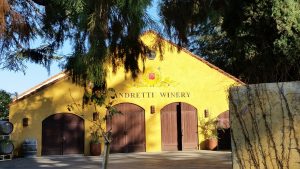
A few examples on just one such side road make our point. Andretti Winery (http://andrettiwinery.com/) and Monticello Vineyards (http://www.corleyfamilynapavalley.com/) are side by side on Big Ranch Road in the southern Napa Town end of the valley. If you’ve ever even heard of motor racing, the name Mario Andretti will be familiar to you, and if you are a racing fan, you will enjoy looking at all the trophies and maybe buy a souvenir. Mario was part of the group that founded his namesake winery, which is deliberately reminiscent of a Tuscan villa, in honor of Mr. Andretti’s heritage. While they do make the widely encountered California wines such as Cabernet Sauvignon and Chardonnay, they are differentiated by the availability of Italian varietals including Pinot Grigio, Barbera, Dolcetto and a sweet Moscato.

The Jefferson House at Monticello Vineyards. Photo courtesy of the winery.
Monticello has an entirely different vibe. Instead of celebrating an Italian-American race car driver and his background, Monticello Vineyards is a tribute to America’s illustrious third President, Thomas Jefferson. Thus, although the tasting room is also in a gracious, neoclassical building, the real gem of the property is what they call Jefferson House. Not a true replica of the building that is imprinted on the nickel, it is nonetheless evocative of the real thing. Unlike many of the nouveau palaces in Napa Valley, this building is beautiful enough in itself to attract visitors. And oh, yes, you can taste wines, the usual combination of Burgundy and Bordeaux varietals that are typical of Napa Valley.
Maybe these aren’t the first choices you would make for wine tasting if you have never been to Napa Valley. For those seeking to expand their experience of this corner of Wine Country, they are an easy trip to make. And why would you not want to go?


